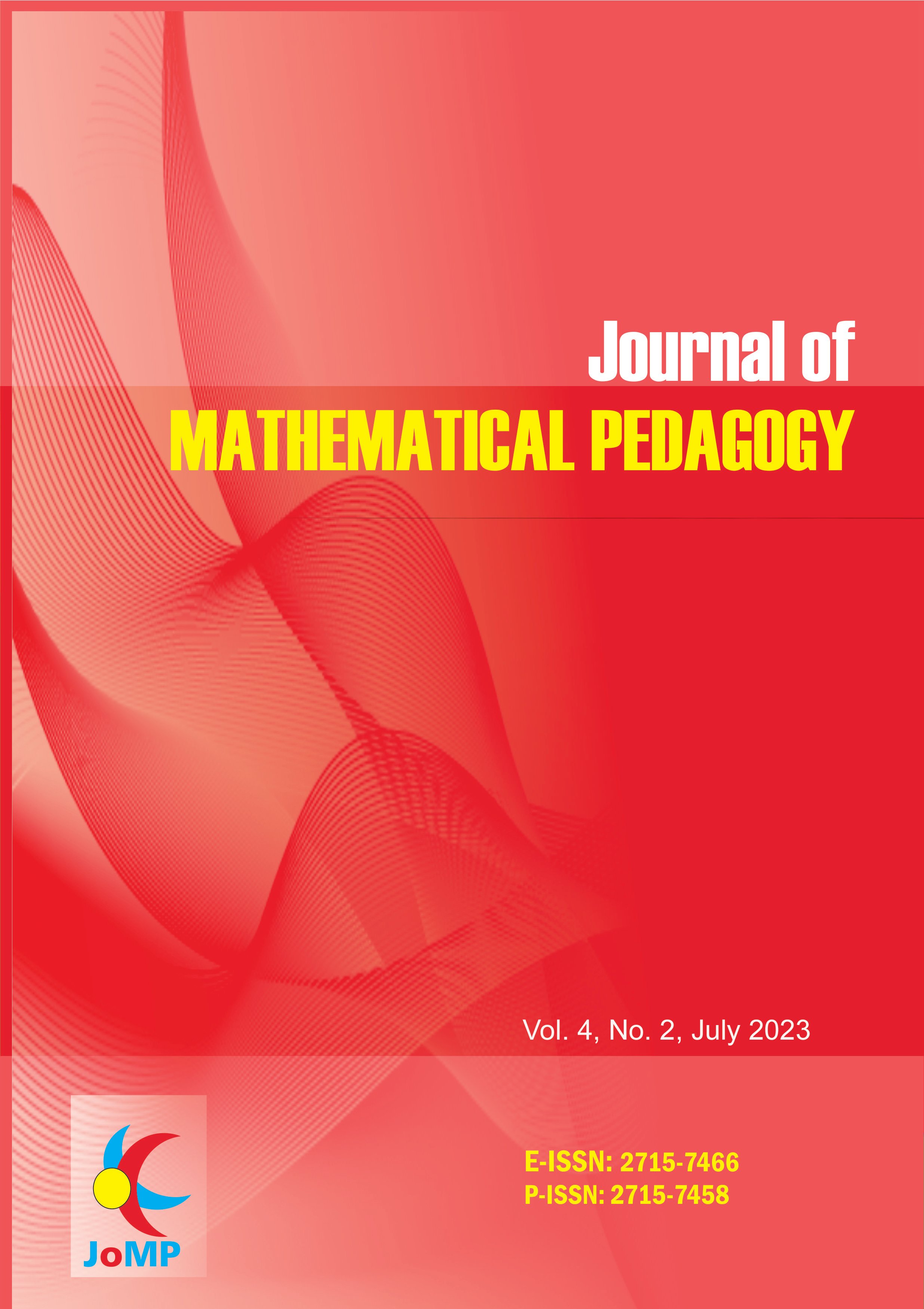Students' Deductive Reasoning in Evaluating Solutions to Geometry Problems
DOI:
https://doi.org/10.26740/jomp.v4n2.p74-83Keywords:
Deductive Reasoning, Evaluation of Problem Solutions, GeometryAbstract
Deductive reasoning is very important in learning mathematics and is one of the formal goals that emphasizes the arrangement of reasoning. This is a qualitative research that aims to describe the deductive reasoning abilities of junior high school students in evaluating problem solutions in geometry material. The subjects of this study were two junior high school students in Gresik who had high mathematical abilities and were of different genders. The instrument used was task-based interviews. The task in question is a deductive reasoning ability test in which there are problems and their solutions. Data analysis was carried out using three indicators of deductive reasoning according to Sumarmo: carrying out calculations based on certain formulas, conducting proofs, and drawing conclusions. The results showed that the deductive reasoning abilities of female and male students were relatively the same. In solving the problem, Both male and female students had similar initial idea by making an example of the length of the side of the given object. However, male students are more capable of proving and considering more effective strategies for solving problems. Therefore, students and teachers need to improve their deductive reasoning abilities and consider all effective strategies for solving problems.
References
Adnyana, G. P. (2012). Keterampilan Berpikir Kritis dan Pemahaman Konsep Siswa pada Model Siklus Belajar Hipotetis Deduktif. Jurnal Pendidikan Dan Pengajaran, 45(3).
Afini, D. W., Mujahidawati, D., & Sabil, H. (2021). Pengaruh Model Pembelajaran POE (Predict Observe Explain) Terhadap Kemampuan Penalaran Matematis Siswa Pada Materi Geometri Kelas VII SMPN Megang Sakti Kabupaten Musi Rawas. https://repository.unja.ac.id/id/eprint/27924
Asmaningtias, Y. T. (2009). Kemampuan matematika laki-laki dan perempuan. Madrasah: Jurnal Pendidikan Dan Pembelajaran Dasar, 1(2).
Budiarto, M. T., Khabibah, S., & Setianingsih, R. (2008). Membangun Level Abstraksi Siswa SMP dalam Memahami konsep Geometeri. Penelitian Fundamental Tahun Pertama, Pusat Penelitian Unesa Surabaya.
Fajri, S. R. (2020). Profil Kemampuan Penalaran Matematis Siswa Sekolah Menengah Pertama dalam Menyelesaikan Soal Limas dan Prisma. (Doctoral Dissertation, UIN AR-RANIRY).
Indah, P., & Nuraeni, R. (2021). Perbandingan Kemampuan Penalaran Deduktif Matematis Melalui Model PBL dan IBL Berdasarkan KAM. Mosharafa: Jurnal Pendidikan Matematika , 10(1). http://journal.institutpendidikan.ac.id/index.php/mosharafa
Krutetskii, V. A., Teller, J., Kilptrick, J., & Wirszup, I. (1976). The psychology of mathematical abilities in schoolchildren (Vol. 8). University of Chicago Press Chicago.
Manyira, M., Saidi, S., & Hamid, H. (2021). Analisis Kemampuan Penalaran Deduktif Matematis Siswa SMP dalam Menyelesaikan Masalah Pertidaksamaan Linear Satu Variabel. Jurnal Pendidikan Guru Matematika, 1(3). https://doi.org/10.33387/jpgm.v1i3.3529
Nababan, S. A. (2020). Analisis Kemampuan Penalaran Matematis Siswa Melalui Model Problem Based Learning. Genta Mulia : Jurnal Ilmiah Pendidikan, 11(1). https://www.ejournal.stkipbbm.ac.id/index.php/gm/article/view/386
Pfeiffer, K. (2011). Features and purposes of mathematical proofs in the view of novice students: Observations from proof validation and evaluation performances. Unpublished Doctoral Dissertation). National University of Ireland, Galway.
Purbaningrum, K. A. (2017). Kemampuan Berpikir Tingkat Tinggi Siswa SMP dalam Pemecahan Masalah Matematika ditinjau dari Gaya Belajar. JPPM (Jurnal Penelitian Dan Pembelajaran Matematika), 10(2). https://jurnal.untirta.ac.id/index.php/JPPM/article/view/2029
Suherman, E. (2003). Strategi pembelajaran matematika kontemporer. Bandung: Jica.
Sumarmo, U. (2016). Pedoman pemberian skor pada beragam tes kemampuan matematik. Kelengkapan Bahan Ajar Mata Kuliah Evaluasi Pembelajaran Matematika Pada Program Magister Pendidikan Matematika STKIP Siliwangi: Tidak Diterbitkan.
Syahbana, A. (2012). Peningkatan Kemampuan Berpikir Kritis Matematis Siswa SMP melalui Pendekatan Contextual Teaching and Learning. Edumatica: Jurnal Pendidikan Matematika. https://mail.online-journal.unja.ac.id/edumatica/article/view/604/7052
Tunnur, R., & Mundilarto. (2017). Pengembangan Model IDACR untuk Meningkatkan Kemampuan Mengevaluasi Peserta Didik SMA pada Mata Pelajaran Fisika. Prosiding Seminar Nasional Pascasarjana Unsyiah, 0(0). https://doi.org/10.17969/rtp.v%vi%i.6882
Yurianti, S., Yusmin, E., & Nursangaji, A. (2014). Kemampuan Penalaran Matematis Siswa pada Materi Sistem Persamaan Linear Dua Variabel Kelas X SMA. Jurnal Pendidikan Dan Pembelajaran Khatulistiwa (JPPK), 3(6). https://doi.org/10.26418/jppk.v3i6.5461
 Abstract views: 272
,
Abstract views: 272
, PDF Downloads: 332
PDF Downloads: 332





